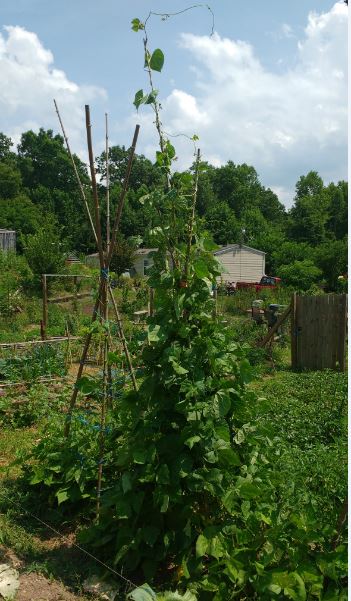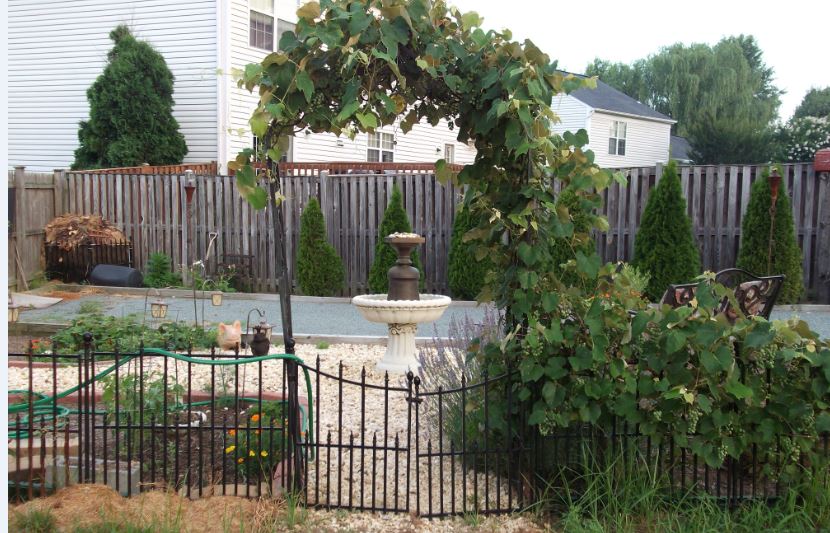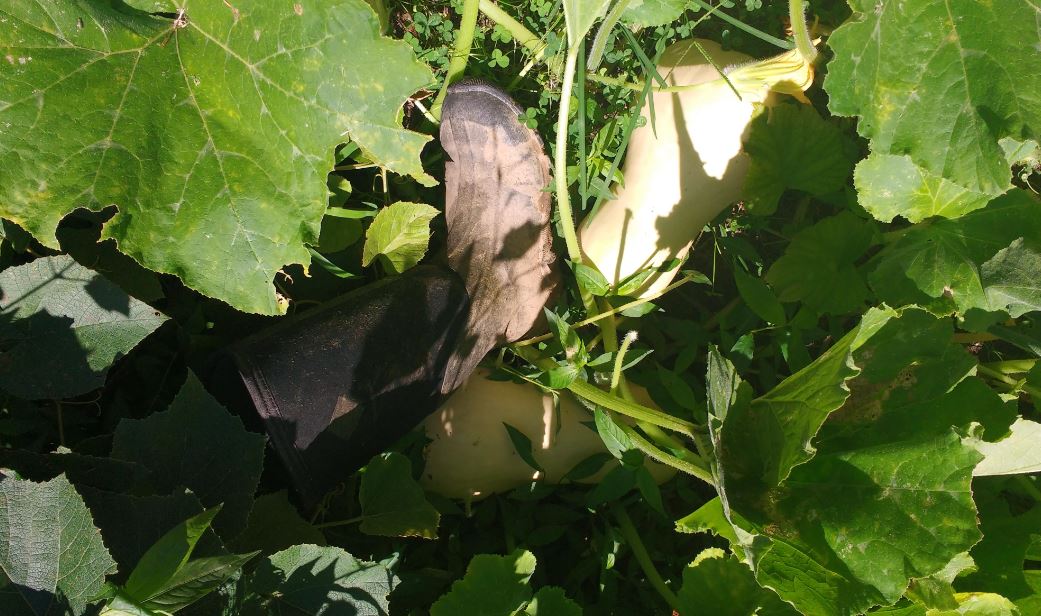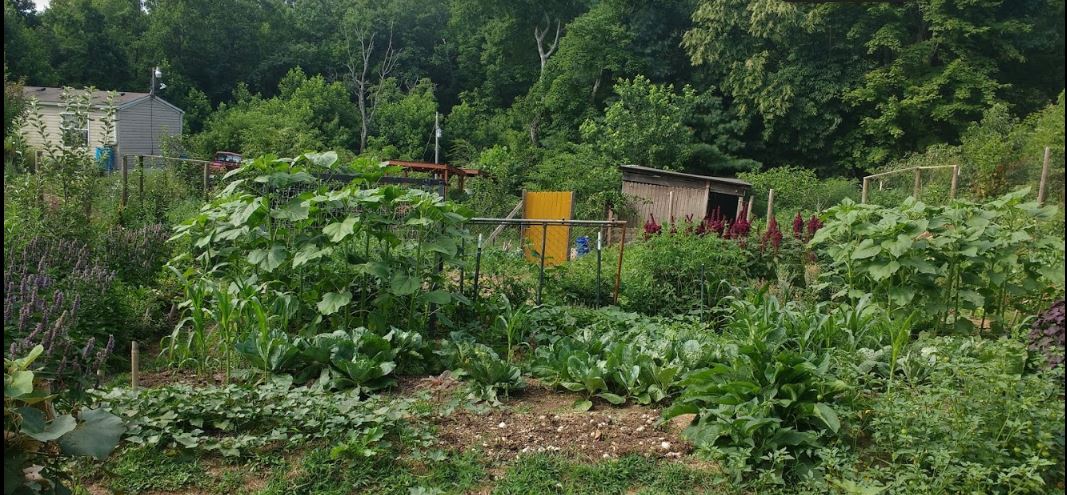Welcome to the Organic Growers’ Tool Kit Series
Tool #6: Rock Dust (and the Great Green Bean Hypothesis)
I have met so many people who’ve told me that they started a garden, were able to grow some green beans, but then had very little success at growing anything else. They then go on to say that insects, diseases, and weeds took out their cabbage, lettuce, tomatoes, and whatever else they tried to grow.
Even without knowing anything else about their gardens or gardening practices, the fact that green beans grew and everything else struggled gives me important clues about what went wrong in the garden.
The Great Green Bean Hypothesis

Here’s what great green bean production and poor everything else production suggests to me:
Problem #1: Soil pH Too High or Low
Green beans can tolerate a wide range of pH ranges. Most other vegetables have narrower ranges. Likely, the pH in the soil was on the low-end of the vegetable range at around 5.5 or on the high end at around 7.5.
Problem #2: Nitrogen Shortage
Green beans fix their own nitrogen and aren’t entirely dependent on what’s available in the soil. That suggests to me that the soil might have had insufficient nitrogen for other plants to grow fast enough and strong enough to protect themselves from pests and diseases.
Problem #3: Soil Texture Issues
Green beans can tolerate a wide range of soil texture types and even tend to grow better in non-loam-type soils. Also, since they grow vertically and fix their own nitrogen, they don’t have to compete with ground-level weeds for sun or macronutrients like other vegetables do. Because soil texture types other than loam tend to be the weediest, success with green beans often points to a soil texture problem, too.
Problem #4: Missing Minerals
Green beans don’t need as many minerals to grow healthy as other vegetables. Besides low levels of N-P-K, which are usually available in sufficient quantities even with minimal soil preparation, green beans really only require calcium, manganese, and iron for good production.
Other vegetables such as cabbages, lettuces, and tomatoes require a larger variety and greater quantities of minerals than green beans. Therefore, broad-spectrum mineral deficiency could also be indicated by green beans being the only productive vegetable in a garden.
Problem #5: Water Shortage
Green beans only require about 1/2 inch of rain per week to grow well. Many other vegetables require 1 inch of rain per week, or more, for good growth. Since green beans are often grown in warm weather, when rain tends to be scarce, green bean success in an otherwise failed garden can also be a sign of water shortage for needier plants.
Secrets for Growing More Than Green Beans
In reality, any one of these problems could have caused the other plants in the garden to grow poorly while the green beans grew well. However, usually when I probe deeper into the gardening practices used, it becomes apparent that many (or all) of these factors are at play.
That’s because most new gardeners don’t spend the time and effort necessary to prepare healthy soil. Unfortunately, rather than realizing that lack of soil preparation is the cause, most people assume they are just terrible gardeners and end up giving up on gardening.
Luckily, it doesn’t have to be that way! With good soil preparation and good maintenance practices, anyone can be a good gardener.
By addressing the root problems in the soil before you plant, you can grow all your vegetables as easily as you grow green beans.
So far in the Organic Growers’ Tool Kit series, I’ve explained the benefits of 5 key tools—organic matter, the mason jar test, an at-home soil test kit, nitrogen fertilizers, and mycorrizhael inoculant—to help whip soil into shape for growing. Those tools can help gardeners overcome problems #1-3 listed above.
Read the Other Articles in the Organic Growers’ Tool Kit Series Here
In addition to those tools, there are 2 more “biggies” essential for growing food. Today, we’re going to cover one of those—organic growers’ tool #6: rock dust.
Then next time, we’ll cover tool #7, which is so simple that most people don’t even realize what a critical tool it is. (Hint: Tool #7 relates to problem #5 in the Great Green Bean Hypothesis above.)
Rock dust is an incredible soil amendment that can help you mineralize your soil and grow even the more difficult, pest- and disease-prone vegetables with ease.
Before we get too deep into the weeds on (or lack of!) when using rock dust, let me start with the story about how I learned about rock dust in the garden.
A Petanque Court Turned Raised Bed

Many years ago, I set up a petanque court in my backyard. The official courts I’d seen in France were always covered with a layer of fine gravel dust. This material made the ball slow almost instantly after hitting the ground.
In my yard, I built what looked like a 4 x 15 meter raised bed using 4 x 4s. Then, I laid down several layers of weed mat to suppress the weeds below.
I covered this area with 4 inches of granite dust from the bulk materials supply yard in my area. They didn’t have the kind of fine gravel I’d seen in France. But the granite dust looked similar enough in texture—and, at $18 a cubic yard, it fit my budget for the project
That court was weed and maintenance free for just over a year. Then, all sorts of food plants started sprouting like crazy: basil, thyme, strawberries, beets, lettuce, borage, sunflowers, purslane, and more popped up on my court. Even though I was a diligent weeder, every time I pulled something up, large clumps of decaying granite dust and giant root masses would create huge divots in my court.
That rock dust clung so tight to the plant roots that I had to use buckets of new granite dust to fill the holes. I then replanted those exceptionally healthy plants in my actual garden beds, where they grew to gargantuan sizes. After a couple years of losing the battle to maintain my petanque court, I finally pulled up the weed mat and started planting direct in the granite-dust court.
I grew beets the size of softballs in 45 days. I had unbelievable tomato yields with absolutely no maintenance. And even though food grew prolifically in that space, inedible weeds like crabgrass were nonexistent.
Now I know that I had accidentally discovered the miracle of good mineralization in the garden!
The Biggest Reasons Why You Should Rock (Dust) Your Garden

Butternut squash as big as giant watermelons
Where I live now, our clay soils are loaded with minerals. Unfortunately, due to the particle size of those minerals and the way they bind with clay, they are not immediately accessible to plants. Which is why, even if you are starting with soil that is naturally high in minerals, adding rock dust to your garden is still a good idea.
Certain rock dusts, when combined with compost, are particularly good for mineralizing soil. The fine particles of dust get worked into the soil by all the micro- and macro-organisms that live in your soil city. The fine rock particles also help break up compaction while depositing plant-accessible minerals at various levels of the soil structure.
Rock dust applied with compost not only adds nutrient content, but also acts like a soil conditioner expediting soil’s transformation to loam.
Plants grown in soil amended with mineral-rich rock dust grow bigger and healthier than plants grown in compost alone.
Also, most people can actually taste a difference between vegetables grown with rock dust. In many blind taste tests, rock-dust veggies are preferred to compost-only-grown veggies.
If you want giant veggies (notice that size 10 work boot next to my butternut squash above for reference) that taste amazing, you want to use rock dust in your garden!
What Is Rock Dust?
Rock dust is really just what it sounds like—rock that has been ground to dust either by nature or human processing. Most of the rock dust is obtained as a result of quarry extractions. Some also comes by way of dredging and sifting.
There are as many kinds of rock dust as there are rocks. Depending on the natural processes that formed those rocks, though, they will have different mineral properties. And so, not all rock dusts are equally suitable to use for mineralizing your soil.
For example, limestone—a rock dust often used in gardens—has the specific benefit of raising the pH in soil. This is because it is made up of at least 50% calcium carbonate. It does contain some other trace minerals, but since regular applications of limestone will make soil too alkaline to grow vegetables, it isn’t a useful choice as a general mineralizer.
Rock phosphate is also used in the garden for the specific purpose of adding phosphorous to the soil. Because overuse of phosphate can lead to toxic nutrient runoff and bind up other nutrients in the soil, it also makes a terrible general mineralizer.
Thankfully, there are some other choices that work well as general mineral amendments without the potential negative consequences.
Rock Dust for Mineralizing Soil

For good general mineralization, consider these rock dusts for your garden.
Basalt Dust
Basalt, which is a ground form of volcanic rock, is purported to be one of the best forms of rock dust for improving the mineral content and production of soil. It is often sold at garden centers in 50 pound, or smaller-sized, bags.
Granite Dust
Granite dust is most often available from bulk retailers of rock products. Depending on where you live, you can find it for as low as $15-25 per cubic yard.
Generally, this is not as uniformly ground as packaged rock dusts. But it is an excellent low-cost general mineralizer, particularly if you need to amend a large area. Larger particles also get broken down fairly quickly in gardens high in organic matter.
Azomite®
Azomite is a registered trademark name for a particular kind of volcanic rock. It is said to have 70+ different trace minerals. It is often available as an inexpensive garden amendment at hardware and garden centers.
Note: There are some people who have concerns regarding the amount of aluminum, lead, and arsenic found in Azomite.
Glacial Rock Dust
This is essentially sediment created by glacial expansion and contraction. It is a good general mineralizer, though it may not contain as many trace elements as Basalt or Azomite.
Gypsum
Gypsum is known for being a good source of calcium and is often used in tomato beds because it will not change the pH of the soil. It also temporarily makes clay soils have better cation exchange (which makes minerals more accessible to plants). However, the effects of gypsum are temporary and so it must be repplied annually.
Overall, gypsum works well for vegetables with high calcium needs, but is not ideal for general mineralization.
Choosing Rock Dust
Unless you have soil acidity problems or known shortages of calcium or phosphorous, steer clear of using gypsum, rock phosphate, or limestone as general garden amendments. Otherwise, any of the rock dusts listed above can be beneficial for your garden.
I happen to live near a granite quarry, so that is my go-to mineral amendment as shipping costs can be prohibitive on bulk amendments. Overall, finding a rock dust source that is available for pick-up near you, at a reasonable price, is probably more important than having a specific brand.
Also note, rock dust is also sometimes called stone dust, stone powder, rock powder, rock flour, and rock ash.
Using Rock Dust
Different rock dust retailers may offer different application instructions for best results. Follow the instructions on the packaging if available.
For the granite dust I buy in bulk, I incorporate about 15 pounds of dust per 100 square feet of garden when starting new beds. I lightly mix the rock dust into the compost and existing soil with my hands or a twist tiller.
When minerals start to deplete, plants grow noticeably slower. Additionally, bitter-spectrum veggies like arugula taste more bitter. I generally use my own observation skills to decide when it’s time to add more.
Read More: “Growing Arugula: The Rocket in Your Salad Bowl and Garden (With Recipe)”
On average, about once every 3-4 years, my beds seem to need another 15 pounds per 100 square feet to maintain soil health. That may vary depending on your soil type. However, once you’ve experienced what it’s like to grow food in well-mineralized soil, you’ll know when its time to re-up!
What Do You Think?
Have you tried rock dust in your garden? Have you ever eaten veggies grown in mineral-rich soil and been able to taste the difference?Let us know your experience and thoughts on rock dust in the comments below!

Tasha Greer is a regular contributor to The Grow Network and has cowritten several e-books with Marjory Wildcraft. The author of “Grow Your Own Spices” (December 2020), she also blogs for MorningChores.com and Mother Earth News. For more tips on homesteading and herb and spice gardening, follow Tasha at Simplestead.com.






